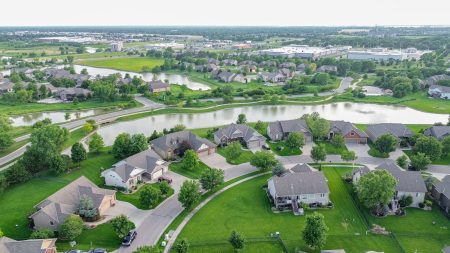gradyreese/GettyImages; Illustration by Hunter Newton/Bankrate
Key takeaways
- Your home insurance policy includes a declarations page and the policy jacket.
- Understanding replacement cost versus actual cash value can help you determine how your homeowners insurance claim could be settled.
- Homeowners should be aware that home insurance policies typically exclude certain types of property damage.
Your home insurance documents can look complex, but knowing how to read a homeowners insurance policy makes it easier to understand. This is especially important since there are conditions you typically have to meet and the policy should spell them out. Regardless of your home insurance company, most standard HO-3 policies include the same key pieces of information, including your coverage selections, limits, deductibles and exclusions. We’ll walk you through the main components of your policy so you feel more empowered and informed.
How to read and understand your home insurance policy
The declarations page is the most important page when trying to understand your homeowners insurance policy. It’s generally a single page or two at most, and will summarize information related to your policy, such as the insurance company’s name, your name, property address, coverage amounts, deductibles, endorsements and annual premium.
The policy jacket, or policy form, is included with the declarations page, and it goes into more detail with policy language, such as exclusions and conditions, as well as definitions of important terms. It’s helpful to read the policy jacket first so you understand the terms you will see on the declarations page.
The parts of a homeowner insurance policy
A homeowners insurance policy includes a variety of coverage types, each one with its own monetary coverage limit. The central element is dwelling coverage, and many other standard coverage options are usually a percentage of this dwelling coverage amount. However, depending on your carrier, you may be able to increase some of these limits or add other endorsements to further personalize your policy.
Knowing what to look for on your policy’s declarations page can be vital if you have to file a claim. If you have endorsements, or add-ons, such as coverage for electronics, high-value items or an earthquake endorsement, you’ll also need to understand the scope of these coverage options. If you have a separate policy for more robust coverage, like a flood policy, knowing what to look for in your policy documents can help you understand your other coverage types.
Here are common coverage types found in your policy documents and what they cover.
| Dwelling | Provides financial protection to repair or rebuild your home’s structure if damaged or destroyed in a covered loss. |
| Other structures | Provides coverage for structures detached from the dwelling, like a fence, shed, barn or gazebo, if damaged or destroyed in a covered loss. |
| Personal property | Covers your personal belongings in the home and often extends some coverage for personal belongings stored in other locations, like a storage unit. |
| Loss of use | If you and your household members are temporarily displaced from your home due to a covered loss, this coverage helps cover costs such as hotel and meal expenses. |
| Liability | Protects you financially if you, a household member or your pet (restrictions may apply) are financially responsible for injuries or damage to someone else or their property. |
| Medical coverage | Provides medical coverage if a guest is injured on your property, but you are not legally responsible for covering the costs of injuries. |
Replacement cost value versus actual cash value
For dwelling and personal property coverage, either replacement cost or actual cash value applies. With replacement cost value, the home or personal property would be covered for the cost to replace what is damaged in a covered loss at the time of the claim, without depreciation. Actual cash value considers depreciation when determining your claim payout amount. Some insurance companies automatically include replacement cost for dwelling and personal property coverage, while other companies require it be added as an endorsement.
What is a home insurance declarations page?
A homeowners insurance declarations page is a snapshot of the home insurance policy that includes vital information about the insurance company and policy. By reviewing your declarations page, you can see how you and your home are insured from covered losses. The elements included in the homeowners declarations page are:
- Policy number: The unique number identifying your policy. This number is used in all transactions, including filing and tracking a claim.
- Property address: The location of the insured property, which may or may not be the same as the mailing address.
- Policy period: The dates listed are the start and end dates of the policy term. Most home insurance policies automatically renew, but you should contact your property insurer if you receive a nonrenewal notice.
- Named insured: The person or people with an insurable interest in the home and the holder of the insurance policy. This can include the owner of the property as well as the mortgage company, which has an insurable interest in the property. Many times, home insurance will be paid through an escrow account with the mortgage company, so this information can be key.
- Coverage types and limits: The specific coverage types included in the home insurance policy or selected by the named insured.
- Premium: The total amount of money you’re responsible for paying, whether directly or through an escrow account, over the policy’s term length to ensure it remains active.
- Home insurance discounts: The list of discounts you’ve qualified for and have added to the policy will be shown on your home insurance insurance declarations page.
- Endorsements: Also referred to as riders, listed endorsements are provisions that add or modify your insurance policy’s coverage.
- Deductible: The fixed amount of money you would pay out of pocket for damage to your home while your insurance covers the rest (up to your coverage limits). A higher deductible usually results in a lower premium, since you’d be taking on more financial responsibility.
- Replacement cost value or actual cash value: The pre-established way your policy is designed to pay out. Replacement cost is the cost associated with repairing or replacing your property or personal belongings at today’s prices, without depreciation factored. The actual cash value is the cost of replacement after factoring depreciation.
Home insurance policy exclusions
A policy exclusion on your homeowners insurance indicates a loss or scenario, known as perils, that is specifically not covered. Policy exclusions are detailed in the policy jacket and can differ by company and policy type.
Most homeowners insurance policies exclude the following perils:
- Normal wear and tear
- Construction defects
- Foundation failure
- Pet and animal damage
- Earth movement
- Intentional loss
- Nuclear hazard
- Mechanical breakdown
- Mold and fungus
Damage from a flood is also not covered under a standard home insurance policy. Some carriers may offer flood insurance separately or you can purchase it directly from the National Flood Insurance Program (NFIP). Earthquakes (categorized under earth movement) are also typically excluded from home insurance policies. However, if you live in an earthquake-prone area, you may be able to buy a separate earthquake insurance policy or, depending on your carrier, you could add an endorsement to your policy.
Frequently asked questions
-
There are several types of home insurance policies. The most basic home insurance policy is an HO-1, which provides coverage on the structure of your home. An HO-2 is a step above the HO-1, as it covers your home and personal belongings for named perils. The most common type of homeowners insurance is the HO-3, which covers your home and detached structure on an open perils basis, and your personal property by named perils. HO-3 policies also cover liability, additional living expenses and medical payments. All in, there are eight types of property insurance policies that provide coverage for various circumstances and types of homes. Each differs in what and how much it covers; talk with your insurance agent to learn which kind you need.
-
Choosing the best home insurance policy for you will depend on the type of coverage that you need, as well as a number of factors about you and your home. You’ll need to consider your location, the potential risks of natural disaster and other potential threats that your home may face, the specific types of fixtures that your property has and how they may add to your liability.
You can use Bankrate’s guide to figure out how to read a home insurance quote and compare rates from multiple insurance providers. Make sure you check third-party reviews and user reviews of the companies to determine if you want to work with these companies.
-
While coverage needs may vary for every homeowner, it’s a good idea to check your home insurance policy at least once a year to make sure it still fits your needs and the coverage limits are adequate, especially due to inflation. If you’ve made any major changes to your house — like getting a new roof, adding an extension or updating your utility system — you should let your insurance agent or company know so your policy coverage can be adjusted accordingly, if needed.
-
Reading a home insurance quote allows you to understand more than just the proposed premium. It will also help you understand whether the policy as a whole will meet your coverage needs. Breaking a quote down into components can help make it easier to understand. Although there may be slight differences in quotes from different companies, most will include much of the information that is on a policy’s declaration page. So your quote should include the coverage types and limits, your deductible amount, what you’ll pay for the premium, any applicable discounts and other policy details. If you’re having trouble understanding the quote you receive, you can always ask an agent to walk you through the details and answer any questions you might have.
-
Conditions are the specific requirements that need to be met for the policy to apply. Policyholders may have a condition that they must report crime-related losses to the police, for example, in order for the claim to be paid out. If a homeowner does not meet these conditions, the insurer could deny coverage.
Common conditions might include filing a proof of loss, protecting the property after a loss and cooperating with the insurance company’s claim process. Again, your home insurance policy should specify the exact conditions you have to meet. If you don’t understand the conditions laid out, it’s worth speaking to a licensed agent to avoid claim denials.
Read the full article here










